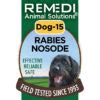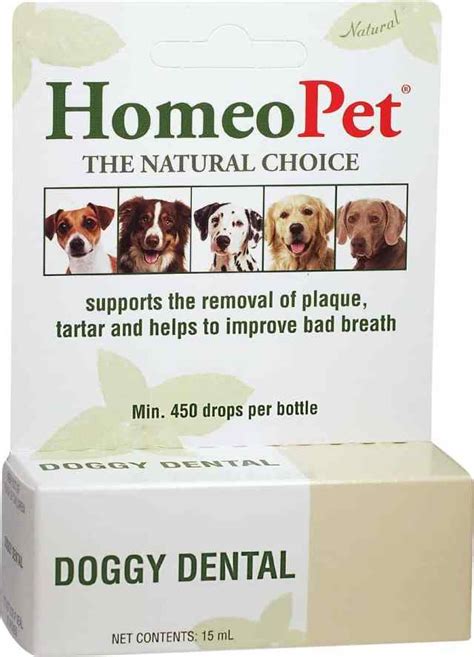Bacterial vaginosis (BV) is a common but often overlooked condition in pets, affecting their health and comfort. Recognizing the symptoms early and understanding the underlying causes are crucial for effective management. This article provides a comprehensive guide on identifying common symptoms of BV in pets, exploring simple and effective home remedies, and implementing preventive measures to enhance your pet’s overall well-being. By closely monitoring your pet’s progress and applying these natural solutions, you can ensure they lead a healthier, happier life. Our expert insights aim to empower you with the knowledge to confidently navigate the complexities of BV and provide the best care for your furry companions.
dominure.com invites you to delve into this topic thoroughly.
1. Identify Common Symptoms of BV in Pets
Recognizing the symptoms of bacterial vaginosis (BV) in pets is the first step toward effective treatment and management. Common symptoms can vary depending on the severity of the infection but typically include:
Unusual Discharge: One of the most noticeable signs of BV in pets is an abnormal discharge from the genital area. This discharge can be white, yellow, or green and may have a foul odor.
Excessive Licking or Scratching: Pets with BV often exhibit behaviors such as persistent licking or scratching of the genital area due to discomfort or irritation.
Redness and Swelling: Inflammation is a common response to infection, so you may observe redness, swelling, or both around your pet’s genital area.
Changes in Urination: BV can cause pain during urination, leading to frequent attempts to urinate or signs of discomfort when urinating.
Behavioral Changes: Your pet may become more irritable, restless, or show signs of distress due to the discomfort caused by BV.
Foul Odor: A strong, unpleasant smell emanating from the genital area is a telltale sign of bacterial infection.
Early detection is key to managing BV effectively. By being vigilant and recognizing these common symptoms, you can seek timely intervention and prevent the condition from worsening, ensuring your pet maintains a good quality of life.

2. Understand the Causes of BV
Understanding the causes of bacterial vaginosis (BV) in pets is essential for effective prevention and treatment. BV is primarily caused by an imbalance in the normal bacterial flora of the genital area. Several factors can contribute to this imbalance:
Poor Hygiene: Inadequate cleaning of your pet’s genital area can lead to the accumulation of bacteria, increasing the risk of infection.
Underlying Health Conditions: Conditions such as diabetes or immune system disorders can make pets more susceptible to infections, including BV.
Hormonal Changes: Hormonal fluctuations, especially in unspayed females, can disrupt the natural balance of bacteria, leading to BV.
Allergies: Allergic reactions to certain foods, grooming products, or environmental factors can cause inflammation and predispose pets to bacterial infections.
Foreign Objects: The presence of foreign objects or debris in the genital area can introduce harmful bacteria and lead to infection.
Sexual Activity: In pets that are sexually active, the transmission of bacteria during mating can cause BV.
By identifying and addressing these underlying causes, you can reduce the likelihood of BV in your pets. Maintaining good hygiene, regular veterinary check-ups, and managing underlying health conditions are key steps in preventing bacterial vaginosis and ensuring your pet’s health and well-being.

3. Explore Effective Home Remedies
When managing bacterial vaginosis (BV) in pets, home remedies can be effective in alleviating symptoms and promoting healing. Here are some natural solutions to consider:
Probiotic Supplements: Probiotics help restore the balance of healthy bacteria in your pet’s body. You can find probiotic supplements specifically designed for pets at most pet stores.
Apple Cider Vinegar: Dilute apple cider vinegar with water (one part vinegar to three parts water) and apply it to the affected area using a cotton ball. This solution can help balance pH levels and reduce bacterial growth.
Yogurt: Adding plain, unsweetened yogurt to your pet’s diet provides beneficial bacteria that can help combat BV. Ensure the yogurt contains live cultures for maximum effectiveness.
Coconut Oil: Coconut oil has natural antibacterial properties. Apply a small amount to the genital area to help soothe irritation and fight infection.
Warm Compress: Applying a warm, damp cloth to the affected area can reduce inflammation and provide relief from discomfort.
Proper Hygiene: Regularly clean your pet’s genital area with mild, pet-safe cleansers to prevent bacterial buildup.
These remedies, combined with veterinary advice, can help manage BV effectively. Always consult your veterinarian before starting any home treatment to ensure it is safe and appropriate for your pet’s specific condition.

4. Implement Preventive Measures
Preventing bacterial vaginosis (BV) in pets involves implementing measures to maintain a healthy balance of bacteria and overall good health. Here are some effective preventive strategies:
Maintain Good Hygiene: Regularly clean your pet’s genital area with a mild, pet-safe cleanser. This helps prevent the accumulation of harmful bacteria and keeps the area clean and healthy.
Balanced Diet: Ensure your pet receives a balanced and nutritious diet. A healthy diet supports a strong immune system, which can help prevent infections. Include probiotics in their diet to promote a healthy bacterial balance.
Regular Vet Check-ups: Routine veterinary check-ups are essential for early detection and management of potential health issues, including BV. Regular exams can help identify underlying conditions that may predispose your pet to infections.
Spaying/Neutering: Consider spaying or neutering your pet. Hormonal fluctuations can contribute to BV, and spaying or neutering can help stabilize hormone levels and reduce the risk of infections.
Manage Allergies: Identify and manage any allergies your pet may have. Allergies can cause inflammation and irritation, making your pet more susceptible to infections. Consult your vet for appropriate allergy management strategies.
Avoid Foreign Objects: Ensure that your pet’s environment is free from debris and foreign objects that could cause injury or introduce bacteria to the genital area.
By following these preventive measures, you can significantly reduce the risk of BV in your pets. A proactive approach to hygiene, diet, and regular veterinary care will help keep your furry companions healthy and happy.

5. Monitor and Evaluate Your Pet’s Progress
Preventing bacterial vaginosis (BV) in pets involves implementing measures to maintain a healthy balance of bacteria and overall good health. Here are some effective preventive strategies:
Maintain Good Hygiene: Regularly clean your pet’s genital area with a mild, pet-safe cleanser. This helps prevent the accumulation of harmful bacteria and keeps the area clean and healthy.
Balanced Diet: Ensure your pet receives a balanced and nutritious diet. A healthy diet supports a strong immune system, which can help prevent infections. Include probiotics in their diet to promote a healthy bacterial balance.
Regular Vet Check-ups: Routine veterinary check-ups are essential for early detection and management of potential health issues, including BV. Regular exams can help identify underlying conditions that may predispose your pet to infections.
Spaying/Neutering: Consider spaying or neutering your pet. Hormonal fluctuations can contribute to BV, and spaying or neutering can help stabilize hormone levels and reduce the risk of infections.
Manage Allergies: Identify and manage any allergies your pet may have. Allergies can cause inflammation and irritation, making your pet more susceptible to infections. Consult your vet for appropriate allergy management strategies.
Avoid Foreign Objects: Ensure that your pet’s environment is free from debris and foreign objects that could cause injury or introduce bacteria to the genital area.
By following these preventive measures, you can significantly reduce the risk of BV in your pets. A proactive approach to hygiene, diet, and regular veterinary care will help keep your furry companions healthy and happy.

By understanding the symptoms and causes of bacterial vaginosis (BV) in pets, you can implement effective home remedies and preventive measures to enhance their health and well-being. Regular hygiene, a balanced diet, and routine veterinary care are essential in managing and preventing BV. With these proactive steps, you can ensure your furry companions remain healthy, comfortable, and happy.
dominure.com

